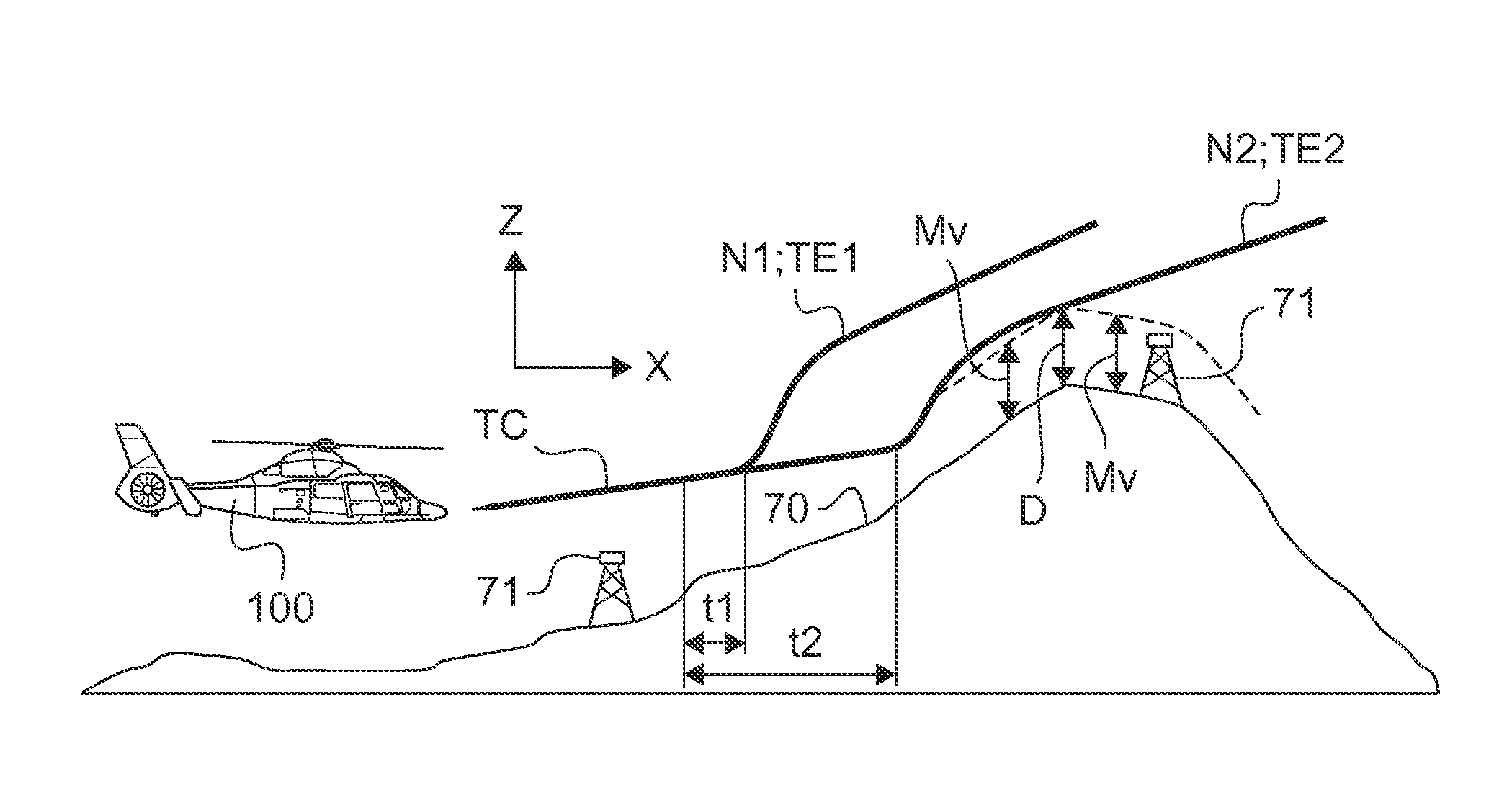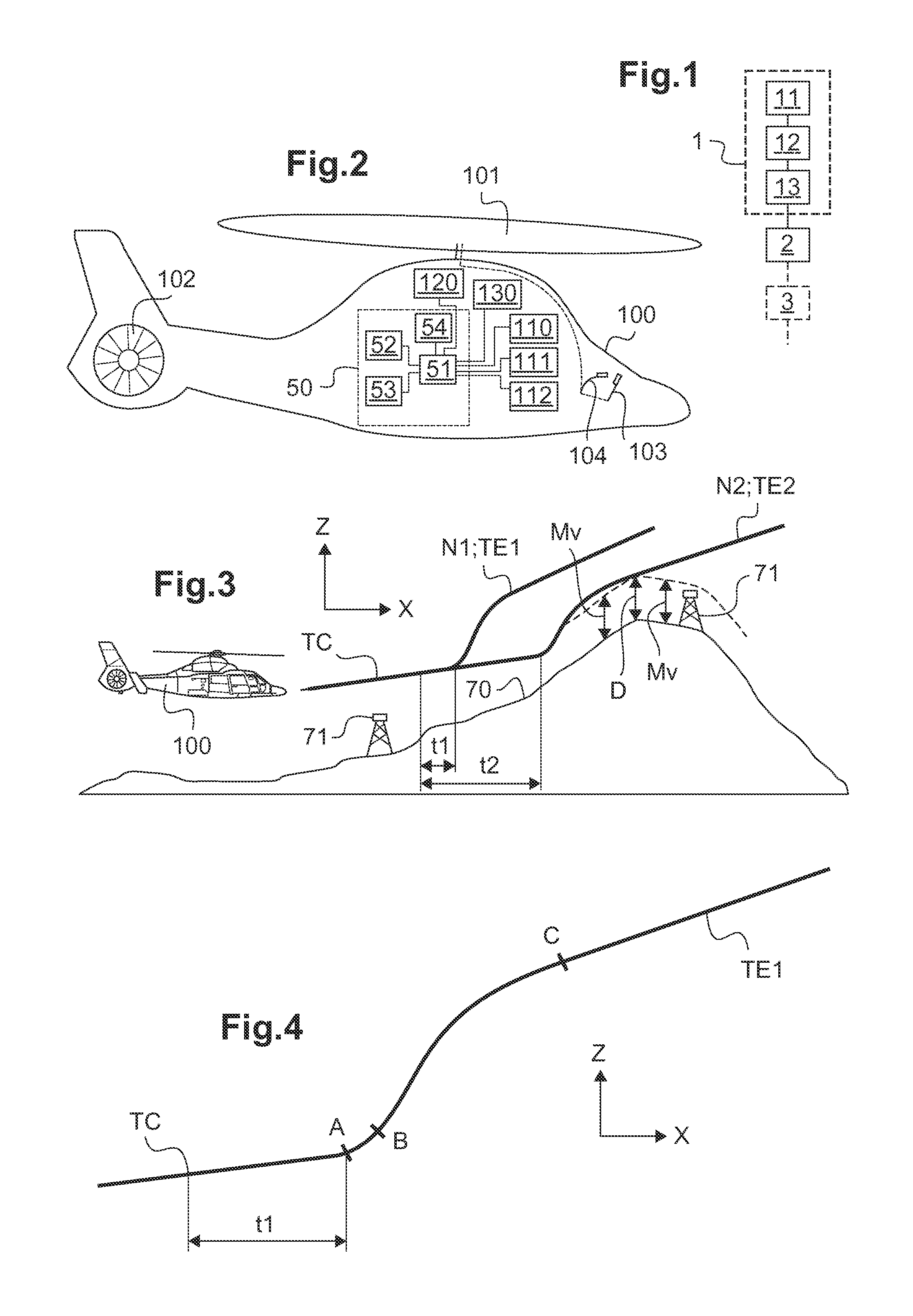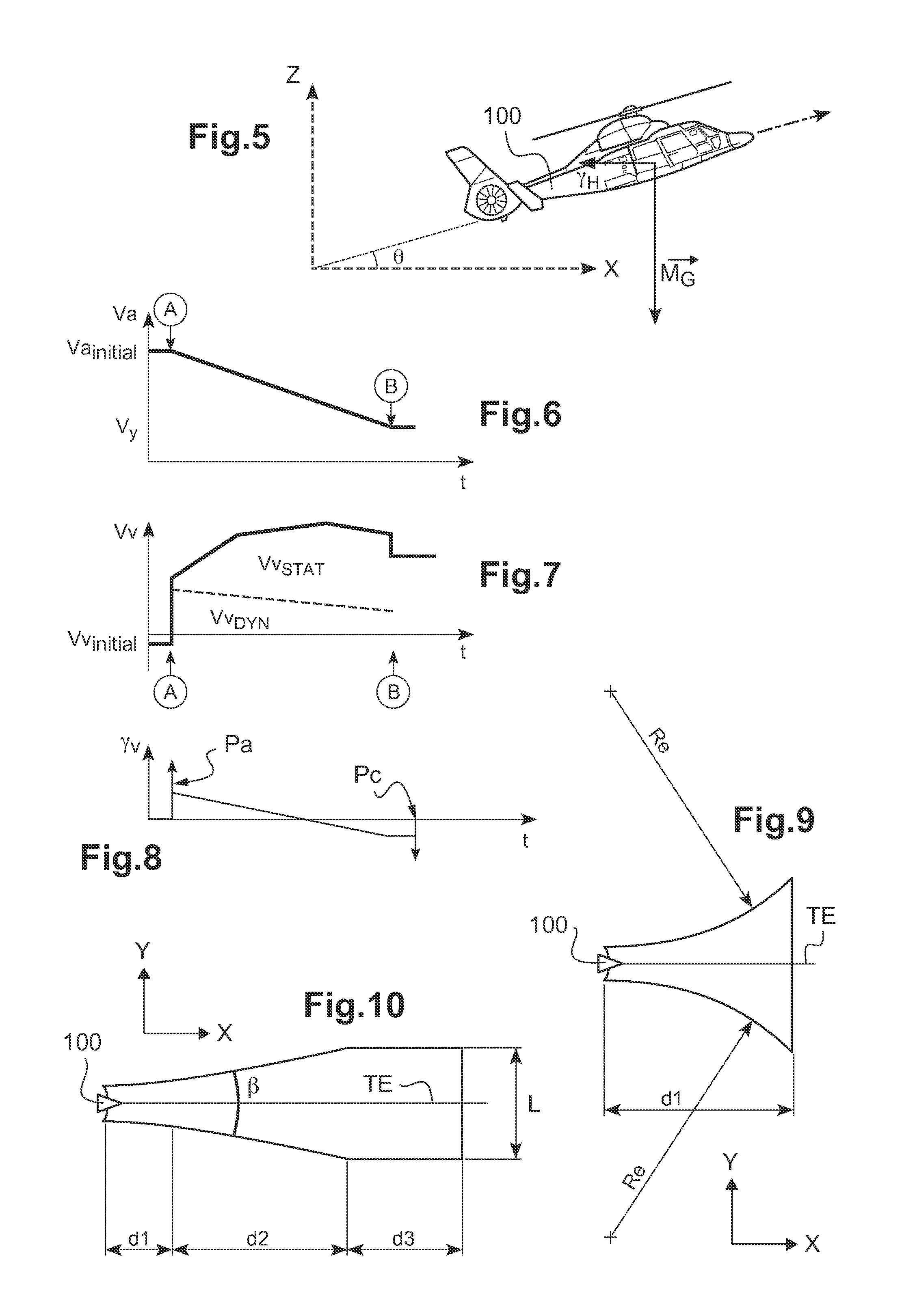Method and a device for issuing terrain avoidance warnings for a rotary wing aircraft
a technology terrain avoidance, which is applied in the direction of actuating personally, process and machine control, instruments, etc., can solve the problems of difficult to implement such a function, not well adapted or suitable for rotary wing aircraft, etc., and achieves the effect of increasing the vertical speed of the aircraft, increasing the mechanical power, and not putting additional strain on the engin
- Summary
- Abstract
- Description
- Claims
- Application Information
AI Technical Summary
Benefits of technology
Problems solved by technology
Method used
Image
Examples
Embodiment Construction
[0130]Elements present in more than one of the figures are given the same references in each of them.
[0131]The figures show three directions X, Y, and Z that are mutually orthogonal and that form an orthogonal reference frame X, Y, Z.
[0132]A direction X is said to be “longitudinal”, and corresponds to lengths or main dimensions of the structures described. Thus, the longitudinal direction X defines the main forward axis of the aircraft described and the tangents to their instantaneous trajectories at their centers of gravity.
[0133]Another direction Y is said to be “transverse”, and corresponds to lateral trajectories or coordinates of the structures described. For simplification purposes, these longitudinal and transverse directions X and Y are sometimes said to be “horizontal”, forming a horizontal XY plane.
[0134]A third direction Z is said to be “in elevation” and corresponds to height and altitude dimensions of the structures described. For simplification purposes, this direction...
PUM
 Login to View More
Login to View More Abstract
Description
Claims
Application Information
 Login to View More
Login to View More - R&D
- Intellectual Property
- Life Sciences
- Materials
- Tech Scout
- Unparalleled Data Quality
- Higher Quality Content
- 60% Fewer Hallucinations
Browse by: Latest US Patents, China's latest patents, Technical Efficacy Thesaurus, Application Domain, Technology Topic, Popular Technical Reports.
© 2025 PatSnap. All rights reserved.Legal|Privacy policy|Modern Slavery Act Transparency Statement|Sitemap|About US| Contact US: help@patsnap.com



